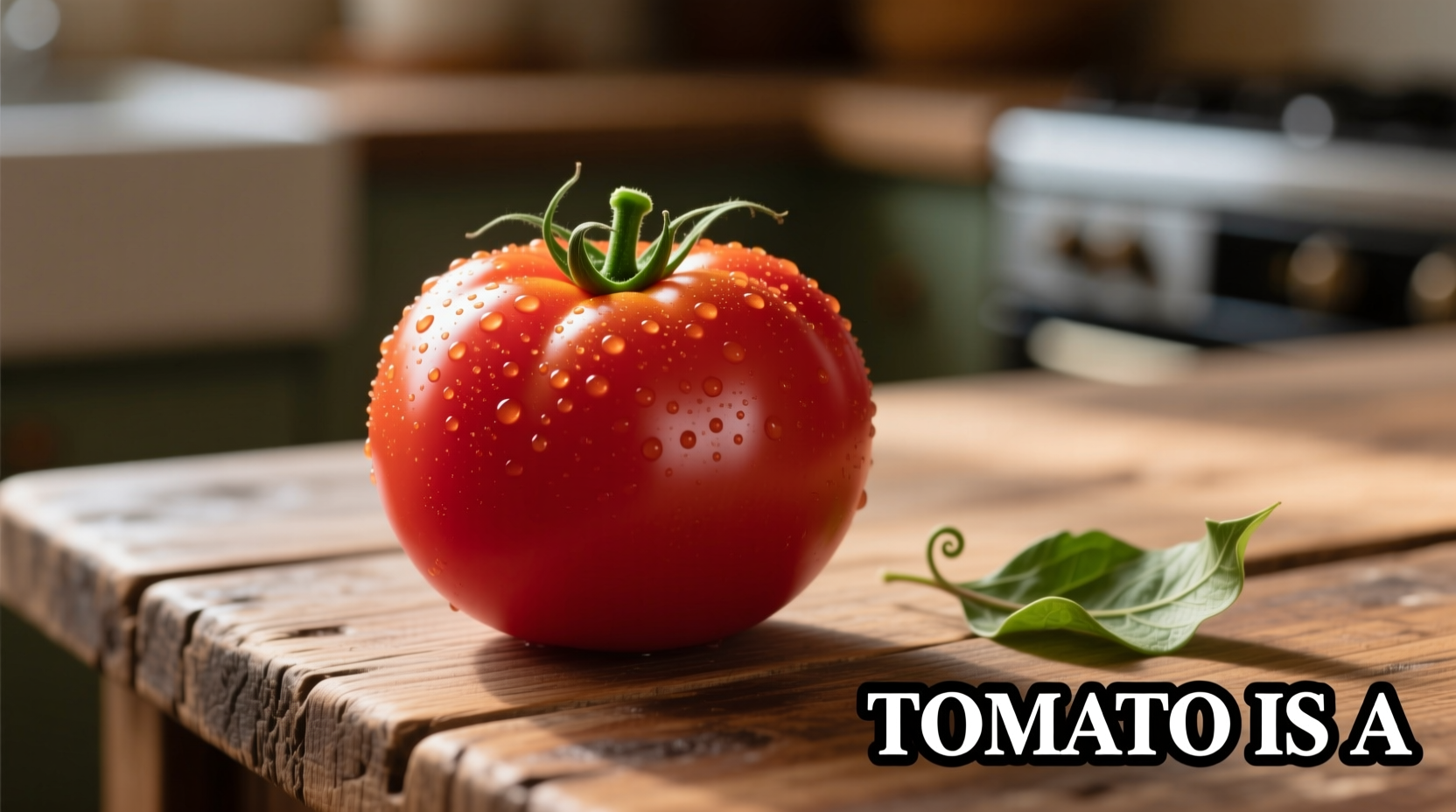Ever found yourself in a heated debate about whether a tomato is a fruit or vegetable? You're not alone. This classification confusion has persisted for centuries, creating culinary debates and even reaching the US Supreme Court. Let's cut through the confusion with science-backed facts that clarify exactly where tomatoes belong in our gardens, kitchens, and legal frameworks.
The Botanical Reality: Why Tomatoes Are Fruits
From a strict botanical perspective, tomatoes unequivocally qualify as fruits. In plant biology, a fruit develops from the ovary of a flowering plant and contains seeds. Tomatoes form after pollination of the yellow flowers on tomato plants, developing from the ovary and housing numerous seeds—meeting the precise botanical definition of a berry-type fruit.
The scientific name Solanum lycopersicum places tomatoes in the nightshade family (Solanaceae), alongside other botanical fruits like eggplants and peppers. This classification remains consistent across botanical authorities including the Royal Horticultural Society and the United States Department of Agriculture's Agricultural Research Service.
Culinary Classification: Why Chefs Treat Tomatoes as Vegetables
Despite their botanical classification, tomatoes function as vegetables in cooking. Their relatively low sugar content (typically 2-3%) compared to sweet fruits (often 10-20%+), savory flavor profile, and traditional use in salads, sauces, and main dishes rather than desserts places them firmly in the vegetable category for culinary purposes.
| Classification System | Tomato Category | Key Determining Factors |
|---|---|---|
| Botanical | Fruit (berry) | Develops from flower ovary, contains seeds |
| Culinary | Vegetable | Savory flavor, low sugar, used in main dishes |
| USDA Nutrition | Vegetable | Nutrient profile aligns with vegetables |
| US Legal (1893) | Vegetable | Customary usage in meals |
Historical Timeline: How Tomatoes Became Legally Vegetables
The tomato's classification journey reveals fascinating intersections between science, commerce, and law:
- 1500s: Spanish explorers bring tomatoes from South America to Europe, where they're initially grown as ornamental plants due to suspicions about toxicity
- 1820s: Robert Gibbon Johnson publicly eats tomatoes on the Salem, New Jersey courthouse steps to prove they're not poisonous
- 1883: US tariff law imposes 10% duty on imported vegetables but not fruits
- 1893: US Supreme Court rules in Nix v. Hedden that tomatoes should be classified as vegetables for tariff purposes based on "the common language of the people" and culinary usage
- 1987: Arkansas designates the South Arkansas Vine Ripe Pink Tomato as the official state vegetable, despite its botanical fruit status
The landmark Nix v. Hedden case (149 U.S. 304) established that while "botanically speaking, tomatoes are the fruit of a vine," they are legally vegetables because "they are used in the same way as potatoes, turnips, and other vegetables." This legal distinction remains in effect today for regulatory and tariff purposes.
Practical Implications: Why Classification Matters
Understanding tomato classification affects several real-world scenarios:
Gardening Considerations
As botanical fruits, tomatoes require specific growing conditions different from many vegetables. They need warm temperatures (70-85°F), consistent moisture, and proper pollination to develop properly. Gardeners treating tomatoes as vegetables often make mistakes like planting them too early in cold soil or failing to provide adequate support for fruit development.
Nutritional Guidance
The USDA includes tomatoes in the vegetable group for dietary recommendations despite their botanical classification. A medium tomato provides 22 calories, 170mg potassium, and 27% of your daily vitamin C needs. Their lycopene content—enhanced when cooked with oil—makes them nutritionally valuable regardless of classification.
Culinary Applications
Professional chefs leverage tomato's dual nature:
- Savory dishes: Use tomatoes as vegetables in sauces, stews, and salads
- Sweet applications: Some chefs create tomato-based desserts like tomato sorbet or tomato jam, acknowledging their fruit nature
- Preservation: Understanding tomato acidity (pH 4.3-4.9) is crucial for safe canning practices

Common Misconceptions Clarified
Several persistent myths surround tomato classification:
- "Tomatoes were declared poisonous": While early Europeans suspected nightshades were toxic, no formal declaration existed. The misconception stems from tomatoes' resemblance to deadly nightshade.
- "The Supreme Court changed tomato's biological nature": The court only addressed tariff classification, not botanical reality. Their ruling specifically acknowledged tomatoes remain botanical fruits.
- "All fruits are sweet": Many botanical fruits (like cucumbers, zucchini, and peppers) have low sugar content and savory applications.
When Classification Actually Matters
For most home cooking, whether tomatoes are fruits or vegetables makes little practical difference. However, the distinction becomes important in specific contexts:
- Seed saving: Understanding tomatoes as fruits helps gardeners properly ferment seeds for viability
- Plant disease management: Botanical classification informs appropriate treatments for fungal diseases
- Food safety: Proper canning requires understanding tomatoes' borderline acidity as fruits
- Legal/commercial contexts: Import tariffs and agricultural subsidies follow the legal vegetable classification
Ultimately, tomatoes' dual identity reflects how language serves different purposes. Botanists need precise biological categories, while cooks and lawmakers prioritize practical usage. This distinction isn't unique to tomatoes—cucumbers, peppers, and eggplants share similar classification duality.











 浙公网安备
33010002000092号
浙公网安备
33010002000092号 浙B2-20120091-4
浙B2-20120091-4